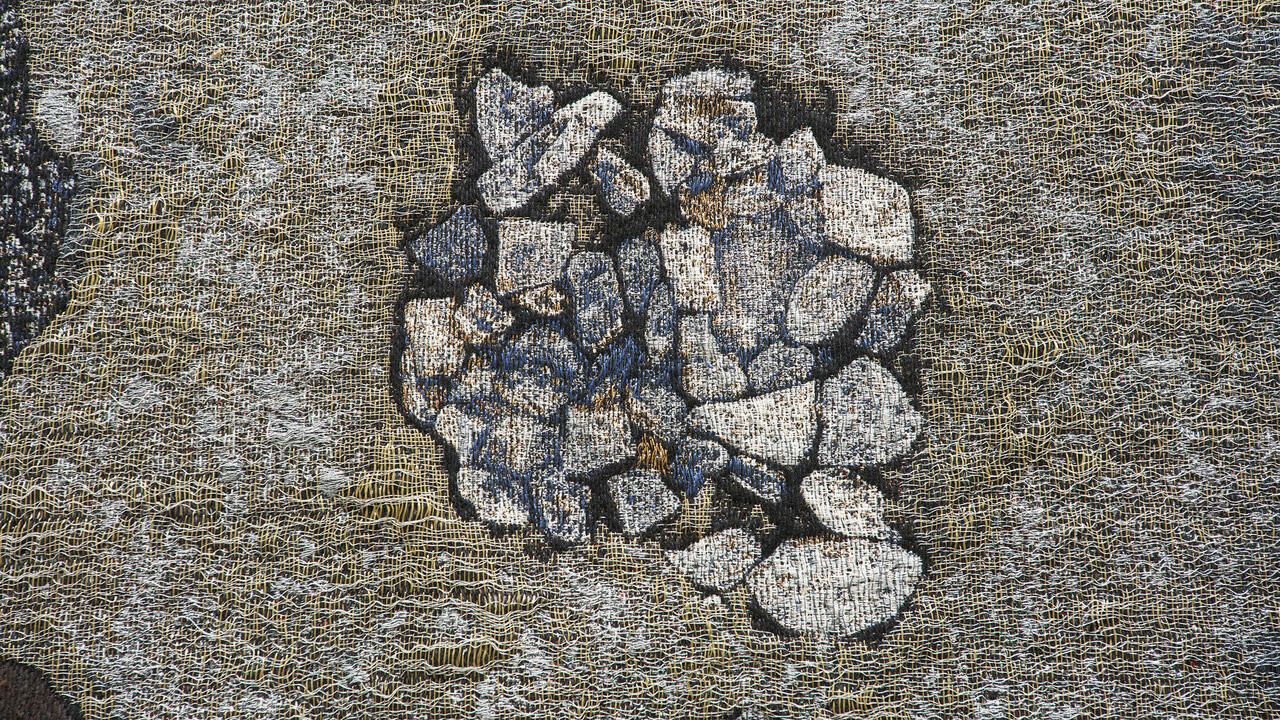Ed Ruscha
All cities tend to spawn tall buildings, towers and spires which, in addition to their primary function as banks, corporate headquarters, or architectural attractions, are also used as observation decks. For the tourist (and even the occasional inhabitant) who trundles up these promontories, the vantage point helps form a specific civic consciousness. Not only does it convert the high-stress metropolis into pleasant scenery, it gives the viewer panoptic power. It turns the distanced maze of streets and buildings into a schematic version of itself, a life-sized map which one can study and read with pleasant detachment.
Ed Ruscha's new paintings of Los Angeles do the same thing, only in reverse: they are views of maps made to look like cityscapes, and in place of expansive vision, substitute an airless atmosphere and mysterious erasure of the built environment. It is the peculiar nature of LA's urban culture that makes the reversal trenchant. Although this city, like all others, has its elevated vantage points, it is a notoriously horizontal place, designed with the automobile rather than the human body as its fundamental unit of measure. In a car, the street map becomes indispensable and the city itself becomes a virtual entity, a collection of destinations and the routes which connect them. Ruscha's pictures wouldn't work if they showed the intersection of Broadway and 42nd street, or the Champs Elysée and Place de l'Etoile. It's the way they tap into the peculiar ethos of Los Angeles which gives them an eerie resonance.
The paintings were made with a spray gun that produced an all-over stippling pattern of varying densities in black and an occasional blue acrylic on unprimed canvas. All the pictures use a birds-eye orientation, but the only things apparent on the flat, featureless plain below are lighter bands of canvas which represent streets, avenues and boulevards. Buildings, trees and all other landmarks are completely absent. In Santa Monica, Melrose, Beverly, La Brea, Fairfax (1998), the streets careen off at angles, like the orthogonal lines in a perspective drawing. In Hollywood to Pico (1998), they are in a parallel formation, but the way they grow closer and closer together toward the top of the canvas creates a sense of recession, which again suggests enormous distances. Each of these bands is then labelled with its street name, whose lettering is also angled to observe the play of perspective.
In Ruscha's trademark style, the pictures hover in a weird perceptual space where reality begins to abstract itself into an idea, while still retaining the vestige of dimensional physicality. The image in each painting is schematic, but the use of perspectival illusionism also makes it seem like something more. By comparison, the spare linguistic elements - the laconic street names - seem vivid and straightforward, given that many of the names have now achieved world-wide iconic status with viewers of American films and television. It's not surprising, then, that when something other than a stripped-down map materialises on two canvases, the relationship between words and picture only gets more uneasy and out of balance. Alvarado to Doheny and Artesia (both 1998) each feature the realistic rendering of a formidable mountain reminiscent of the Matterhorn, one covered in snow, one cloaked in twilight, with a list of Los Angeles street names overlaid cryptically in clunky block letters. The typeface in each litany of names grows smaller and smaller, again suggesting perspective and the kind of vast distances that would be consonant with the mountain's sense of scale and monumentality. But what the pairing of words and image really conveys is its own wilful incongruity, as though the artist were combining otherwise incompatible elements just to see what kind of sparks they'll throw off.
By tossing a monkey wrench into the works, these two pictures make it apparent that the rest of the exhibition is also a kind of perceptual laboratory. Because the depiction of maps and street names makes all these paintings a collection of signs as well as a collection of objects, they test the mechanisms of persuasion. They make suggestion just as important as substance, wilfully blurring the difference between what they are, and what they tell you they are.
















